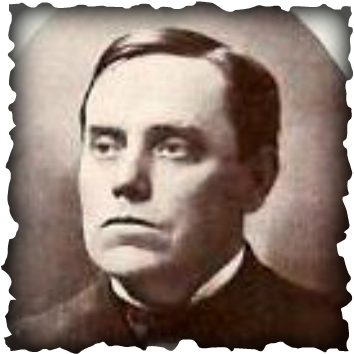Warren Akin Candler
1857 - 1941

Warren Akin Candler was born the tenth of eleven children to Samuel and Martha Bernetta Beall Candler. His father was a prosperous merchant and farmer. Candler attended Emory College from 1874 to 1877 and later served as its president from 1888 to 1898. During his administration, Candler transformed the college by reorganizing its financial affairs, paying all its debts, increasing the size of the faculty as well as the student body, doubling the number of volumes in the library, expanding course offerings and making them more rigorous, doubling the endowment, and establishing a $20,000 student loan fund - contributing a substantial amount of his own wealth in the process. He also raised money for the construction of new buildings, including a new waterworks system to replace the two ordinary wells that were supplying all the water needs for the campus. Candler also tenaciously pressed the trustees to build a new library to house the many rare volumes that had been given to the college by prestigious alumni and beloved faculty emeriti. His persistence paid off in 1894 when trustee J. P. Williams pledged $5,000 toward the $25,000 of estimated construction costs for the new library designed to hold 70,000 volumes. The cornerstone was laid on April 26, 1897. Despite his protestation, the building was named Candler Hall in his honor and served as the college library for over 70 years. Today, it serves as a book store, houses the Campus Life staff, and is used as a venue for events.
Another of Candler’s enduring legacies is the “athletics for all” intramural sports program he established. He had the old science building converted to a gymnasium, cleared an athletic field, and established a compulsory athletic program.
In 1898, Candler was elected bishop in the Methodist Episcopal Church South and oversaw the expansion of Emory College into a university with theology, law, and medical schools. In 1914, he became chancellor of the newly formed Emory University.
Candler was one of several bishops who opposed the 1934 proposal for reunification of the Methodist Episcopal Church and the Methodist Episcopal Church South. The two divisions split in 1844 over the issue of slavery and episcopal prerogative but, by 1934 a reunification movement had taken hold. To accomplish this, proponents of reunification persuaded the General Conference of the Methodist Episcopal Church South to adopt a rule for the mandatory retirement of bishops at age 72. This rule forced the retirement of Bishop Candler and one other opponent to reunification, and thereby paved the way for reunification to take place in 1939.
In 1936, Candler spearheaded a campaign to rescue and restore Oxford’s abandoned and deteriorating Old Church. He was successful in preventing the cherished landmark’s demolition and oversaw the placement of a stone marker at the site. Candler died on September 25, 1941. His funeral was held at Old Church and he was buried at the Oxford Historical Cemetery.
Another of Candler’s enduring legacies is the “athletics for all” intramural sports program he established. He had the old science building converted to a gymnasium, cleared an athletic field, and established a compulsory athletic program.
In 1898, Candler was elected bishop in the Methodist Episcopal Church South and oversaw the expansion of Emory College into a university with theology, law, and medical schools. In 1914, he became chancellor of the newly formed Emory University.
Candler was one of several bishops who opposed the 1934 proposal for reunification of the Methodist Episcopal Church and the Methodist Episcopal Church South. The two divisions split in 1844 over the issue of slavery and episcopal prerogative but, by 1934 a reunification movement had taken hold. To accomplish this, proponents of reunification persuaded the General Conference of the Methodist Episcopal Church South to adopt a rule for the mandatory retirement of bishops at age 72. This rule forced the retirement of Bishop Candler and one other opponent to reunification, and thereby paved the way for reunification to take place in 1939.
In 1936, Candler spearheaded a campaign to rescue and restore Oxford’s abandoned and deteriorating Old Church. He was successful in preventing the cherished landmark’s demolition and oversaw the placement of a stone marker at the site. Candler died on September 25, 1941. His funeral was held at Old Church and he was buried at the Oxford Historical Cemetery.